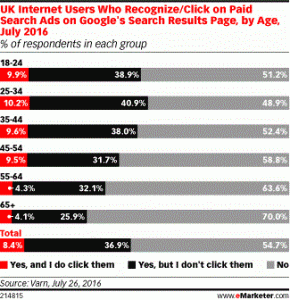Why Should I Care?
US smartphone penetration is up to 75% as of the end of 2014. Late last year, mobile traffic exceeded desktop traffic for the first time. And according to Nielsen, 87% of mobile users used their mobile device for shopping activities like searching for a product or service, pricing comparisons, or brick & mortar address search.
 According to Google:
According to Google:
Appearing on smartphones is critical for local businesses. 94% of smartphone users look for local information on their phone and 84% take action as a result, such as making a purchase or contacting the business.
Google has also been focusing more recently on the user experience of websites, preferring those that provide a good user experience because web users like those sites better. And a website that’s not mobile-friendly provides a poor user experience for smartphone users.
Google has previously announced that whether a site is mobile-friendly is a positive ranking factor. As a hint that it might be due for increased weight in Google rankings, early this year Google started issuing warnings to webmasters if their site isn’t mobile-friendly. Then as recently as last week, Google wrote “Starting April 21, we will be expanding our use of mobile-friendliness as a ranking signal.” Google has already begun a rollout of alerts for users indicating which sites in it’s search results are mobile-friendly. It’s not universal yet, but seems to be increasing in coverage.
What makes a site mobile-friendly?
 There are four main things that distinguish a mobile-friendly site:
There are four main things that distinguish a mobile-friendly site:
- It avoids use of software that doesn’t work on phones (like Flash).
- It makes links and buttons large enough and far enough apart to be easily clicked with a finger.
- It uses text that can be easily read without zooming.
- It sizes content so there’s no horizontal scrolling needed and no zooming required.
Check your site
There are two easy ways to check to see whether your site is mobile-friendly or not.
- Use the Google Mobile-Friendly Tool to see if Google thinks you’re mobile-friendly.
- The acid test: look up your site on a phone yourself and judge.
What if you fail the test?
If you fail the test, you have three options.
- You can talk with your web designer about a site redesign to make your site “responsive”. Responsive means your website changes how it looks depending on what kind of device is used to view it.
- Without a website redesign, you can use a tool like DudaMobile to create a mobile version of your site. Typically it replaces the “www.” prefix with a “m.” prefix and does a lot of the redesign work for you. You will still need to spend time tweaking it to look the way you want, and there’s an annual fee for the service.
- Do nothing and take your chances with your Google rankings.
Not being mobile-friendly is not yet a major ranking signal at Google, but it will be increasing in importance over time as smartphones and tablets continue to displace laptops and desktops as the platform of choice. The next big jump in its importance as a ranking signal is scheduled for April 21 of this year.
If you’re not currently mobile-friendly, now is the time to fix that.
Find the article helpful? Then please share it with your friends and colleagues with the buttons above and give it a +1 below.
Need help showing up min Google, Yahoo & Bing? Rank Magic can fix that.
Tell us about your own mobile-friendly experience in the comments below.
(330)
Report Post






